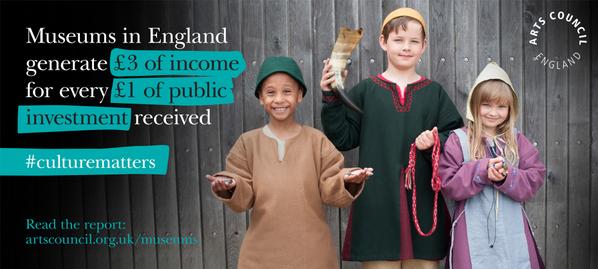 Arts Council England has released a new report that seeks to quantify the ‘economic impact’ of museums. It estimates that to be £1.45 billion. That doesn’t matter much – there are no insights to be gained, no policy implications, from the estimate’s being £1.45 billion or £2.07 billion or £1.03 billion. Still, ACE thought that funds spent on producing this report were useful for something, useful enough to justify the opportunity costs in reduced funding for artists and arts organizations – maybe there will be a follow-up study that explains this.
Arts Council England has released a new report that seeks to quantify the ‘economic impact’ of museums. It estimates that to be £1.45 billion. That doesn’t matter much – there are no insights to be gained, no policy implications, from the estimate’s being £1.45 billion or £2.07 billion or £1.03 billion. Still, ACE thought that funds spent on producing this report were useful for something, useful enough to justify the opportunity costs in reduced funding for artists and arts organizations – maybe there will be a follow-up study that explains this.
I just want to raise one small point. Consider this graphic distributed on Twitter through @ace_national:
What exactly does this mean? The strong impression given is that every £1 granted to museums by the public sector will generate £3 of income.
But we have no evidence that this is true. Page 19 of the report does explain what is going on: public funding accounts for about 25% of museum revenue. That’s the source of the numbers in the graphic. Public funding coexists with other forms of revenue, but the former does not generate the latter.
As an aside, if public funding only accounted for 10% of museum revenue, they could have produced an even more stirring graphic: that every £1 granted in public funds generates £9 of income.
Arts advocates, please: economic impact studies, expensive to produce, useless and forgotten as research, are not how to demonstrate that #culturematters.


Michael,
I thoroughly enjoy reading your posts. Your point is very well taken about economic impact studies. But, why do they work so well as advocacy tools?
Thank you, I am glad you enjoy the blog. I would ask this: how do we know ‘economic impact’ has worked well as an advocacy tool? I have heard it said often, but never seen evidence. Has the NEA done better in terms of budget appropriation as a result of the turn to ‘economic impact’ in advocacy? State arts agencies? Why are arts budgets cut whenever there is fiscal downturn – wouldn’t the ‘economic impact’ suggest more spending should take place? In short: I am unconvinced they truly do work well in advocacy.
“Public funding coexists with other forms of revenue, but the former does not generate the latter.” > This is one of the endless suite of correllation studies (without any CAUSAL research component in the study), with an ugly Spin Doctors head on it.
Telling semi-lies, based on extensive graphs, is a political technique. It never leads to better performance.